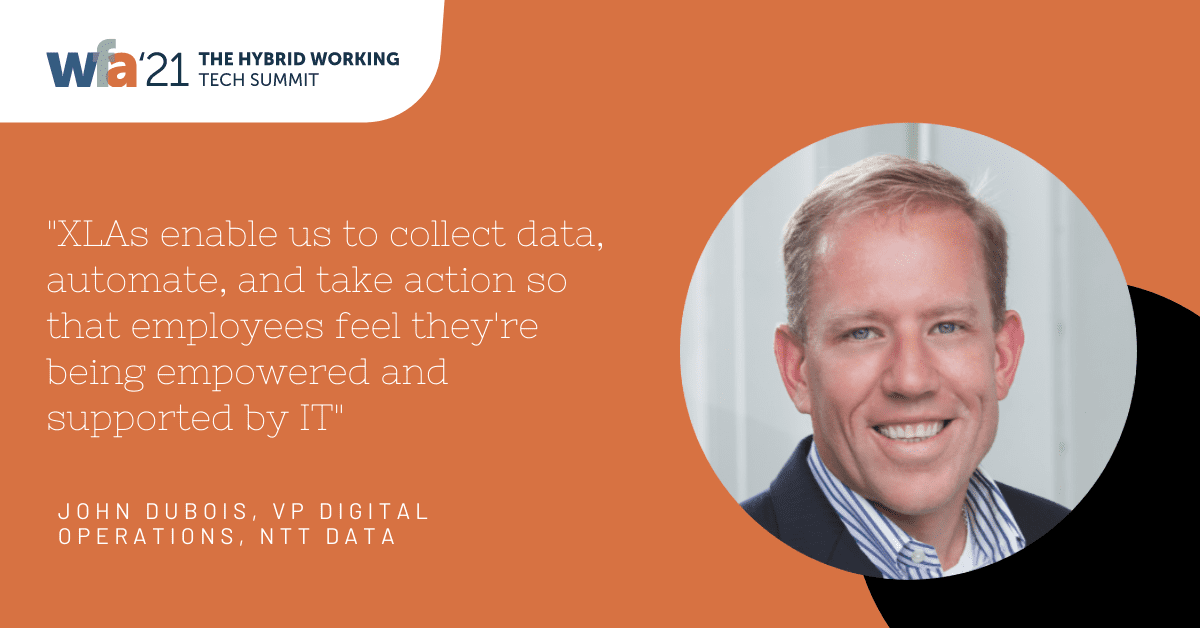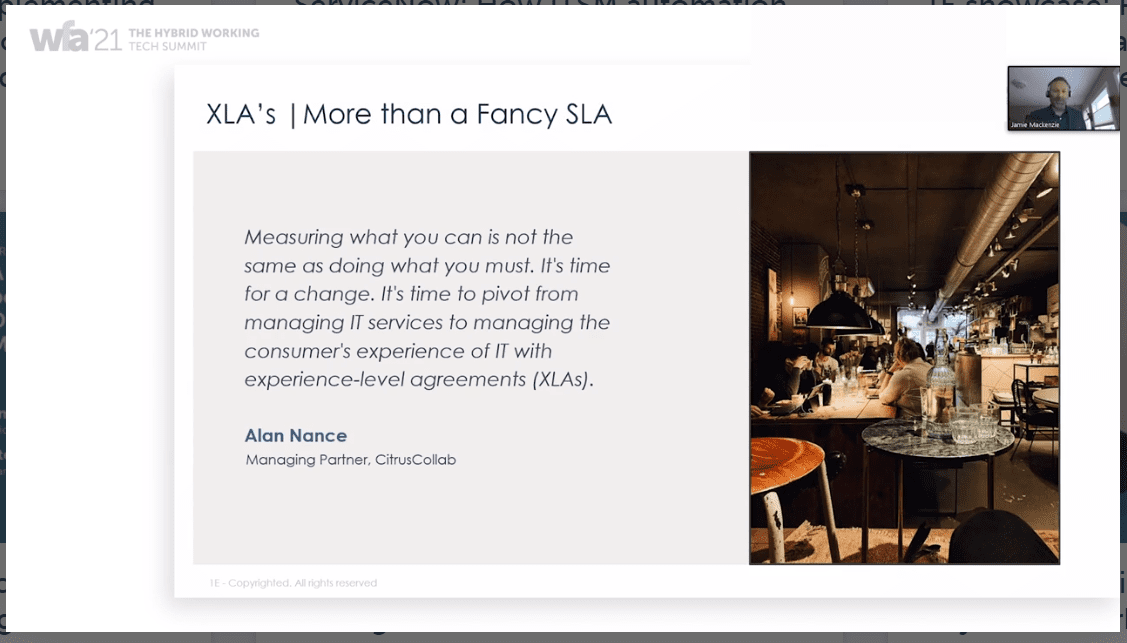We’ve spoken previously about how 2021 will be the year forward-looking organizations increasingly adopt Experience-Level Agreements (XLAs) to better support, track, and quantify employee experience improvements. XLAs will transform enterprises this year, with research showing that 75% of organizations implementing XLAs in 2021. Unsurprisingly then, they were a key talking point at our recent Work From Anywhere (WFA) conference.
Understanding XLAs
Experience-Level Agreements (XLAs) represent a “contract” between internal or external IT Services functions and the business organization. They’re built upon a set of quantifiable employee-centric metrics and outcomes and seek to provide insight into the employee – or customer – experience.
They are the extension of a better customer focus with the IT service desk and indicate a move away from being overly SLA-focused. Why would we want that? Well – in short – meeting a Service-Level Agreement (SLA) doesn’t ensure that your customer had a good experience, it just means that you successfully provided the agreed service. In this increasingly hybrid world of work, with more remote workers than ever before, it’s vital for IT to understand the user experience.
Collect Data, Automate, Take Action, and Empower
In a session at the WFA conference focused on ‘Key IT leadership considerations for ’21 and beyond’, John DuBois (VP Digital Operations, NTT Data) explored the why behind XLA adoption. He expanded further on why reliance on SLAs – particularly in today’s hybrid working environment – needs to evolve. John described the ‘watermelon effect’, i.e. on the surface, SLAs appear green when it comes to things like tickets resolved or average speed to answer. However, if we dig below to surface to ask users how they feel about their IT experience, we come to find that there’s dissatisfaction and frustration and – in some cases – employees have stopped using IT altogether!

It’s important to ensure that end-users do feel supported, as a poor employee experience will leave users feeling frustrated and like they aren’t cared for and have them looking for the door! According to Gallup, highly engaged teams are 21% more productive and have 28% less internal theft than those with low engagement. Focusing on employee sentiment and attrition is arguably more of a priority in today’s climate than ever before, John emphasized, as employees are burnt out. Many have worked harder and often longer hours over the last year or so, and – whilst it drove productivity during the pandemic’s peak – this isn’t sustainable.
This is where XLAs come in to enable us to understand how users feel about their IT environment, their tools, process available, and (importantly) if they feel they’re getting the support they need to be productive. Monitoring and removing friction, automating or removing mundane tasks, and enabling employees to focus on innovation and business outcomes will go a long way in improving employee experiences and reducing turnover.
The Workplace Has Changed, Let’s Catch Up!
Another session at WFA ’21 that explored XLAs was that of Jamie MacKenzie (Director of End-User Computing, WBM). Jamie focused on the changing nature of work; Because of the pandemic, we find ourselves with less direct face-to-face contact and support and instead have a variety of new technologies and routines. As such, we need to change how we function, collaborate, and innovate – and XLAs are a great example of innovation to catch up with the changing world of work.

Working environments will continue to change and become more employee centric. The regular work week as we once knew it isn’t the future – Hybrid work that empowers people to work from anywhere, whilst maintaining a healthy work/life balance is the future. And the best way to support this employee-centric hybrid working is to go beyond traditional measurements of service.
Utilizing XLAs to go beyond traditional measurements of service gain insight into how users actually feel about their devices and applications is critical to drive innovation and value within your organization. This knowledge will enable businesses to keep their people productive and better understand how to provide the devices, tools, and support needed to make their jobs easier. The workplace has already changed, whether we like it or not, its time for us to change along with it.
If you'd like to learn more about XLAs and how to enable successful hybrid working you can see both John and Jamie's sessions – as well as many others! – in full on our Work From Anywhere replay site here.




